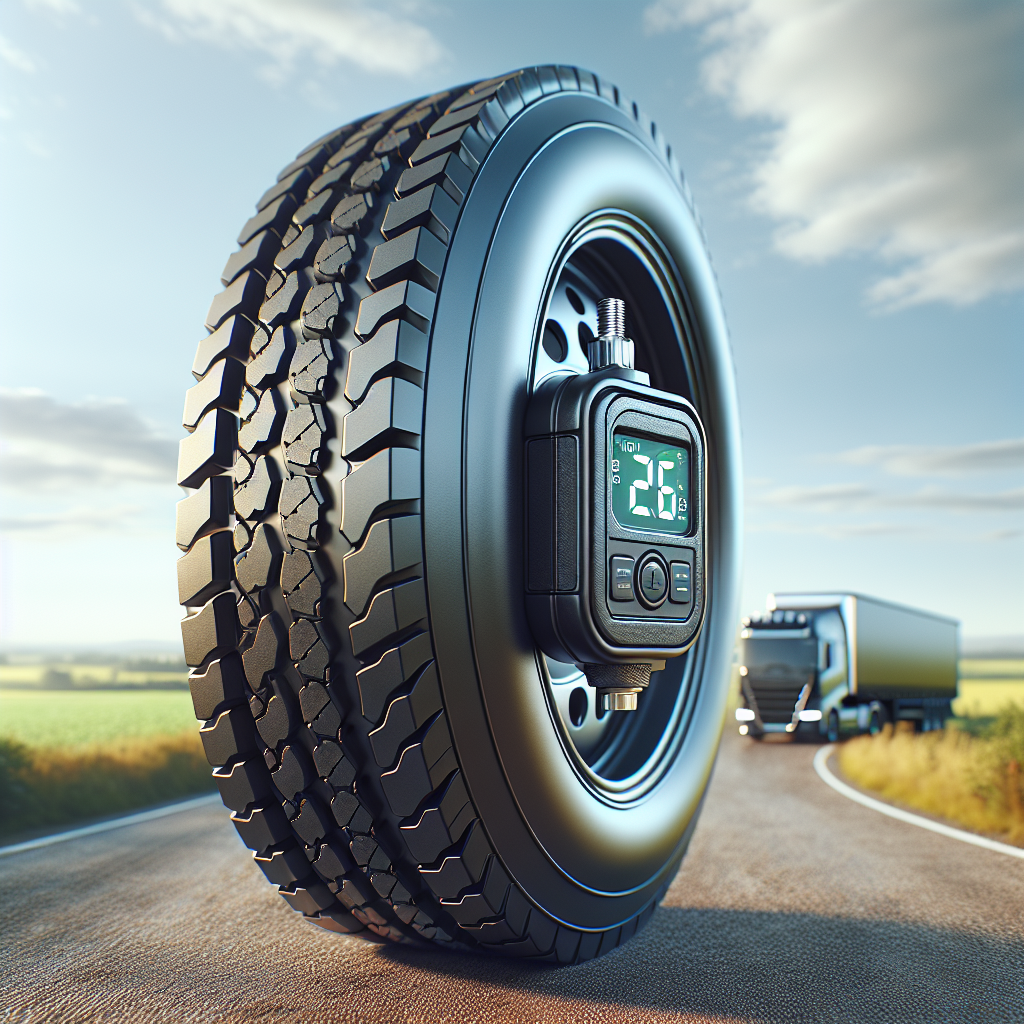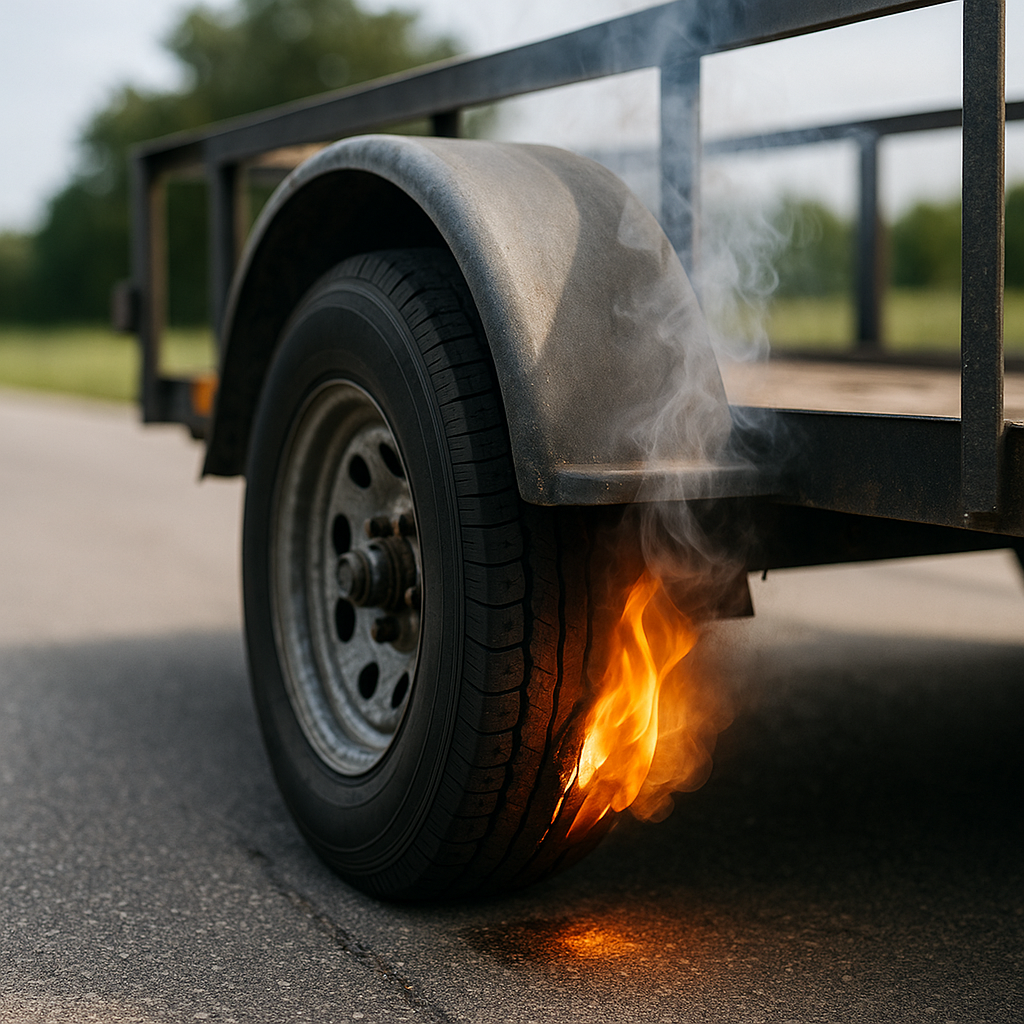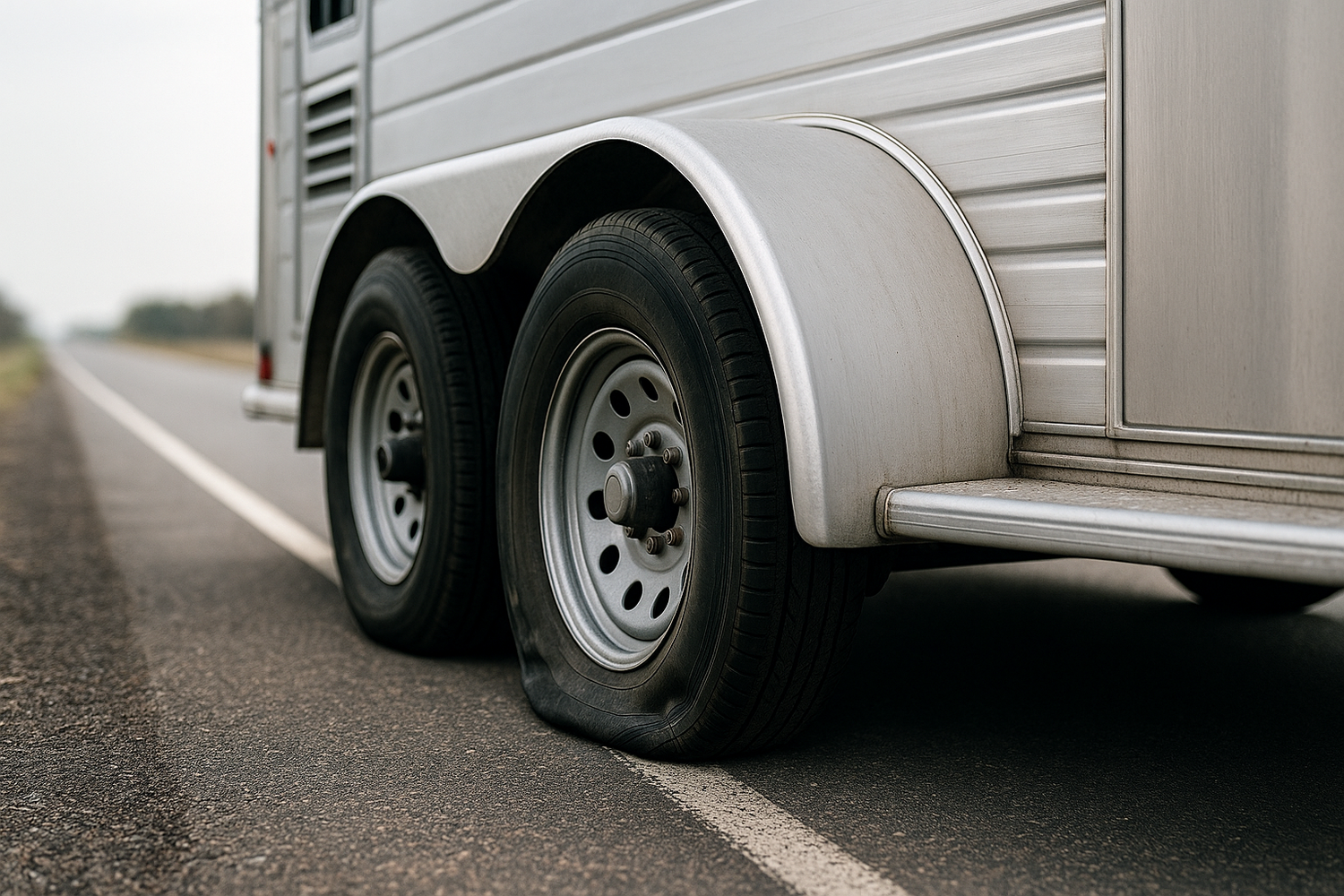Maintaining optimal tire pressure is crucial for ensuring the safety and performance of your trailer. When tires are improperly inflated, it can lead to a myriad of problems, including increased wear and tear, reduced fuel efficiency, and even catastrophic tire failure. This is where a trailer tire pressure monitor becomes an indispensable tool.
A tire pressure monitoring system (TPMS) continuously keeps track of the pressure levels within each tire. By alerting the driver to any significant deviations from the recommended pressure, these devices help prevent dangerous situations. Here are some key reasons why monitoring tire pressure is vital:
- Enhanced Safety: Correct tire pressure minimizes the risk of blowouts, which can lead to serious accidents.
- Improved Fuel Efficiency: Properly inflated tires reduce rolling resistance, ultimately leading to better fuel economy.
- Extended Tire Life: Maintaining the right pressure prevents uneven wear, allowing tires to last longer and perform better.
Investing in the best trailer tire pressure monitor not only enhances safety but also contributes to overall cost savings in the long run. It's essential for every trailer owner to prioritize tire pressure monitoring to ensure a smooth and reliable towing experience.
Tow with peace of mind, knowing that trailerwatchdog is standing guard.
Key Features to Look for in a Tire Pressure Monitor
When selecting a tire pressure monitor for your trailer, it’s essential to consider several key features that will enhance its functionality and reliability. A quality tire pressure monitoring system (TPMS) can significantly impact your towing experience, ensuring safety and performance. Here are some crucial features to look for:
- Real-Time Monitoring: Opt for a TPMS that provides real-time data on tire pressure. This feature allows you to receive immediate alerts about any fluctuations, ensuring prompt action can be taken.
- Temperature Monitoring: In addition to pressure, monitoring tire temperature can help detect potential issues caused by overheating, which can lead to tire damage or failure.
- Wireless Technology: A wireless system offers easier installation and eliminates the need for complicated wiring, making it more user-friendly and adaptable to various trailer types.
- Durability: Look for monitors that are built to withstand harsh conditions. Features like weatherproofing and a robust design ensure longevity and reliability, even in challenging environments.
- Easy-to-Read Display: A clear and intuitive display is vital for quickly assessing tire pressure and temperature at a glance, minimizing distractions while driving.
- Multiple Tire Support: If you have a multi-axle trailer, choose a monitor that can support multiple tires, providing comprehensive coverage and monitoring capabilities.
By focusing on these key features, you can choose a tire pressure monitor that best suits your needs and enhances the safety and efficiency of your towing experience.
Top-Rated Trailer Tire Pressure Monitors Reviewed

In the market for a trailer tire pressure monitor, several models stand out due to their performance, features, and customer satisfaction. Here’s a closer look at some of the top-rated tire pressure monitors that have received excellent reviews from users:
- TPMS A: This monitor is known for its real-time monitoring capabilities, providing accurate tire pressure and temperature readings. Its wireless system makes installation a breeze, while the durable design ensures longevity in various weather conditions.
- TPMS B: Featuring a large, easy-to-read display, this model excels in user-friendliness. It supports multiple tires and alerts you immediately if any tire pressure falls outside the safe range, making it a great choice for multi-axle trailers.
- TPMS C: Renowned for its advanced features, this system includes both tire pressure and temperature monitoring. The robust construction and weatherproof design make it ideal for heavy-duty use, ensuring it stands up to the rigors of towing.
- TPMS D: This budget-friendly option does not compromise on quality. It offers reliable pressure readings and a straightforward installation process, making it perfect for those looking for a cost-effective solution without sacrificing safety.
- TPMS E: This high-end model is packed with features, including a smartphone app that provides notifications directly to your device. It’s designed for the tech-savvy user who wants to monitor their trailer tires from anywhere.
Choosing the right tire pressure monitor can significantly affect your safety on the road. By considering these top-rated options, you can find the perfect system to suit your needs and ensure a smooth towing experience.
How to Install and Use a Trailer Tire Pressure Monitor

Installing and using a trailer tire pressure monitor can seem daunting, but the process is straightforward if you follow these steps. Proper installation ensures you get accurate readings and can help prevent potential tire issues.
- Gather Your Tools: Before you start, ensure you have all necessary tools handy, such as a wrench or screwdriver, and the tire pressure monitor kit, which typically includes sensors, a display unit, and installation instructions.
- Prepare Your Trailer: Park your trailer on a level surface and ensure the tires are cool. Check the manufacturer’s recommended tire pressure for your specific trailer.
- Install the Sensors: Most tire pressure monitors come with sensors that need to be attached to the valve stems of each tire. Remove the valve cap and screw the sensor onto the stem, ensuring it is tight but not over-tightened to avoid damage.
- Set Up the Display Unit: After installing the sensors, mount the display unit inside your vehicle or in a convenient location where you can easily see it while driving. Follow the instructions to pair the display with the sensors, which usually involves pressing a button on the unit and ensuring it recognizes each sensor.
- Calibrate the Monitor: Once paired, calibrate the monitor according to the manufacturer's specifications. Input the recommended tire pressure for each tire, which will help the monitor alert you if the pressure drops below safe levels.
- Test the System: Before hitting the road, do a quick test to ensure that the monitor is functioning correctly. Check that the display shows accurate tire pressures and that alerts are working as intended.
Using a trailer tire pressure monitor is as simple as keeping an eye on the display during your travels. Regularly check the readings, and if you receive an alert, address the issue immediately to maintain safety on the road.
Benefits of Using a Tire Pressure Monitoring System

Utilizing a Tire Pressure Monitoring System (TPMS) offers numerous advantages that significantly enhance safety and performance while towing. Here are some key benefits:
- Enhanced Safety: A properly functioning TPMS helps prevent tire blowouts and accidents caused by under-inflated tires. By continuously monitoring tire pressure, it alerts you to any significant changes, allowing for timely action.
- Improved Fuel Efficiency: Maintaining the correct tire pressure enhances fuel efficiency. Under-inflated tires create more rolling resistance, leading to increased fuel consumption. A TPMS helps ensure your tires are always at optimal pressure, saving you money at the pump.
- Extended Tire Life: Consistently monitoring tire pressure can prolong the life of your tires. Proper inflation reduces uneven wear and tear, allowing you to get the most out of your investment in tires.
- Real-time Monitoring: A TPMS provides real-time data on tire pressure, giving you immediate insights while on the road. This feature is especially valuable for long trips, as it allows you to monitor tire health without having to stop frequently.
- Convenience: Modern TPMS units often come with user-friendly displays and smartphone connectivity, making it easy to check tire status at a glance. This convenience is particularly beneficial for fleet operators who manage multiple trailers.
- Peace of Mind: Knowing that your tires are being monitored in real-time allows you to focus on driving rather than worrying about potential tire issues. This peace of mind is invaluable, especially when towing heavy loads.
Incorporating a tire pressure monitoring system into your trailer setup can significantly improve safety, efficiency, and overall towing experience. By staying informed about your tire conditions, you ensure a smoother journey with fewer surprises along the way.
Conclusion: Choosing the Best Trailer Tire Pressure Monitor

Choosing the best trailer tire pressure monitor is crucial for any trailer owner who prioritizes safety and performance. With a plethora of options available, it's essential to consider a few key factors:
- Accuracy: Look for monitors that provide precise readings. This will ensure you have reliable data to make informed decisions about your tire health.
- Real-time Alerts: Opt for a system that offers real-time notifications for any significant changes in tire pressure. This feature is vital for preventing potential hazards while on the road.
- Ease of Installation: The best systems are user-friendly and can be easily installed without the need for professional assistance. This convenience saves time and reduces hassle.
- Durability: Ensure the monitor is built to withstand the rigors of towing and various weather conditions. A durable unit will provide long-lasting service and reliable performance.
- Compatibility: Verify that the TPMS is compatible with your specific trailer type and size. Some monitors may be designed for specific applications, so it’s essential to choose one that fits your needs.
Ultimately, investing in a high-quality tire pressure monitoring system can lead to a safer and more efficient towing experience. By selecting the right unit, you can help prevent tire failure and ensure your trailer is ready for the road ahead.
Tow with peace of mind, knowing that trailerwatchdog is standing guard.








